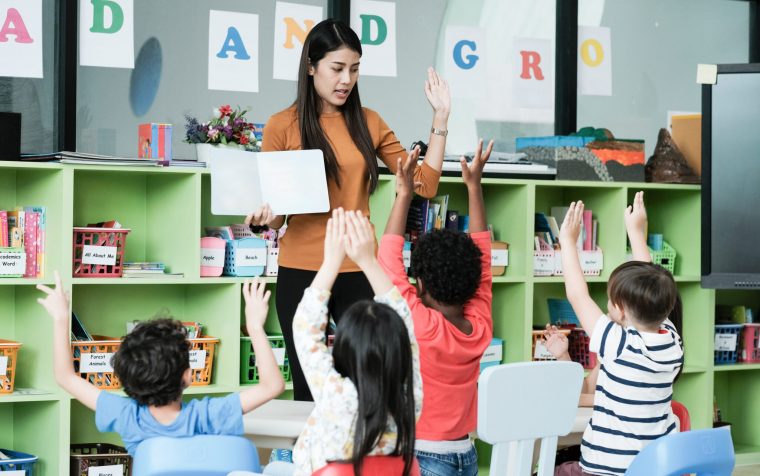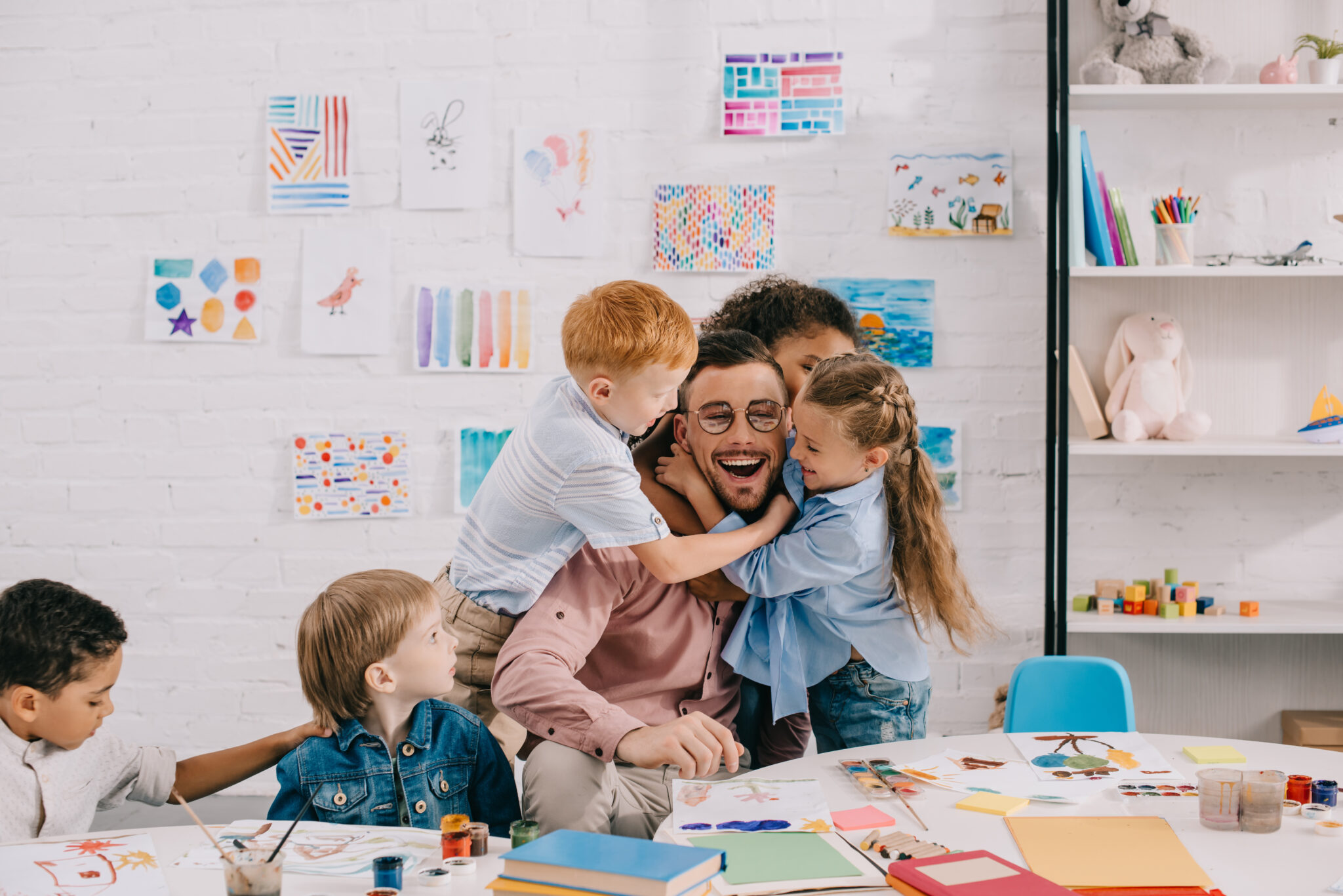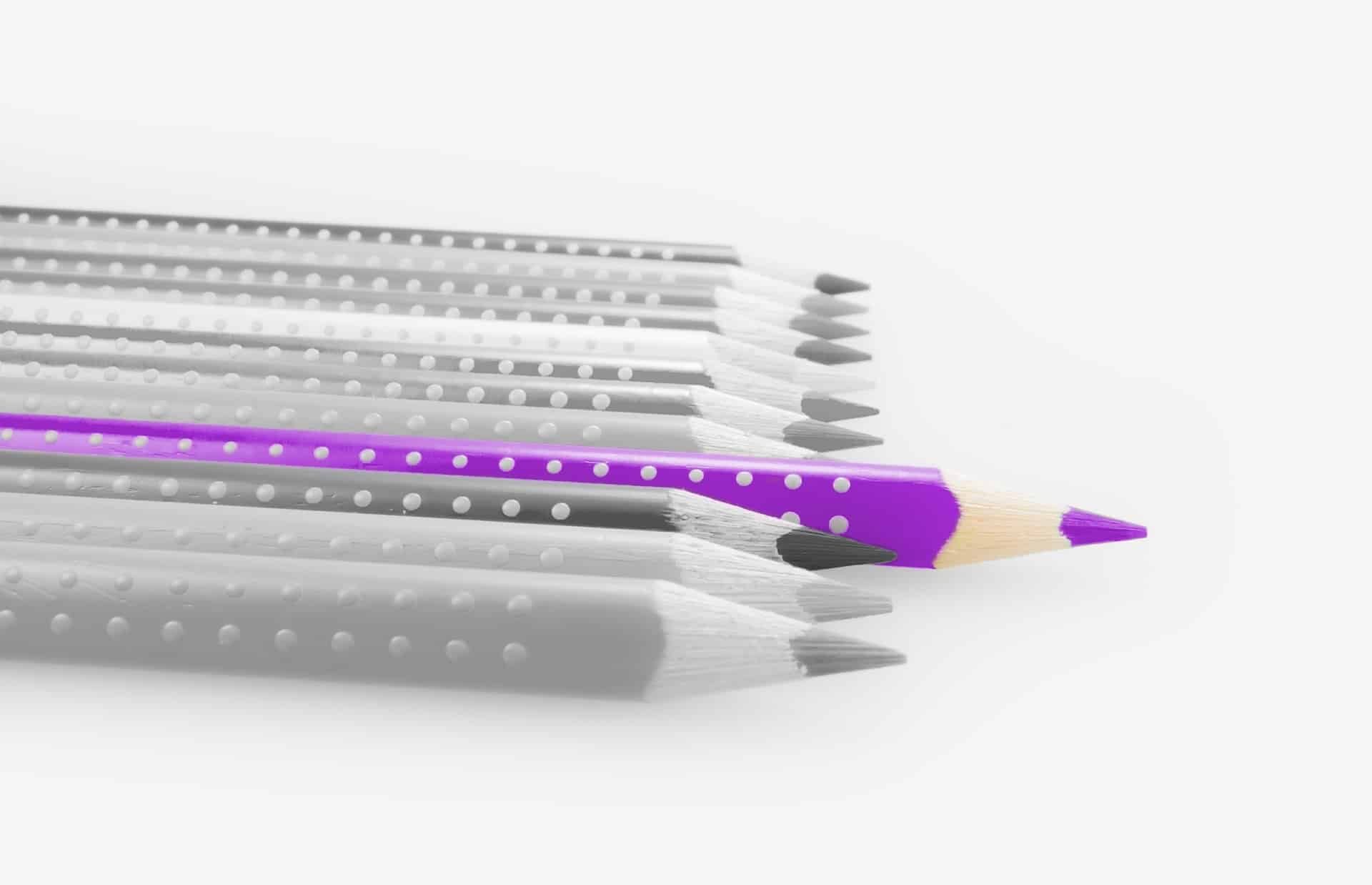Safe learning environments are vital for all classrooms, regardless of whether they serve gifted or general education students. It is reasonable to assume that all members of the education community want safe learning environments for students, since the greatest academic and social growth occurs within these atmospheres. In this article, we define learning environments as:
The complete physical, social, and pedagogical context in which learning is intended to occur. The term most often refers to school classrooms but may include any designated place of learning such as science laboratories, distance learning contexts, libraries, tutoring centres, teachers’ lounges, gymnasiums, and non-formal learning spaces. The components and attributes of a learning environment are conceptualized in relation to their impact on learning processes and outcomes in both cognitive and affective domains. (UNESCO, 2012; p. 12)
The need for safe learning environments has gained international attention and has become even more prevalent in recent years to help prevent and address increased school violence (e.g., physical, psychological, sexual; see UNESCO, 2023a; UNESCO, 2023b) and to create safe spaces for students regardless of their backgrounds (e.g., race, ethnicity, gender, sexual orientation, religion, differently abled; Collins et al., 2021; Fisher & Hawkins, 2013; Flesner & Von der Lippe, 2019). All children deserve to learn without fear in physical and digital classrooms (e.g., cyberbullying; Smith et al., 2012).
With the increased diversity of students in American schools, there is an ever growing need to provide safe and equitable learning environments for all students. During the 2017-2018 school year, the U.S. Office of Civil Rights (2020) reported that 13.45% of students were identified for gifted services, and of those identified students, approximately 0.7% identified as American Indian/Alaska Native, 9.9% as Asian, 8.2% as Black, 18.3% as Hispanic or Latino, 4.2% as Two or More races, 0.2% as Pacific Islander, and 58.4% as White. Beyond ethnic and racial diversity, 2.4% of students were identified as English Learners and 2.8% were identified for Special Education (Individuals with Disabilities Act [IDEA], 2004). Due to this increased heterogeneity across the nation, there is a need to ensure we are creating “positive learning environments that offer appropriately differentiated, challenging, and equitable learning opportunities that celebrate students’ different backgrounds and develop their unique strengths” (Gilson & Lee, 2023, p. 236).
The National Association for Gifted Children set standards for educators of the gifted that describe evidence-based recommendations and student outcomes (Corwith et al., 2019). Standard 4 focuses specifically on learning environments and describes them as places that “foster a love for learning, personal and social responsibility, multicultural competence, and interpersonal and technical communication skills for leadership to ensure specific student outcomes” (NAGC, 2019, p. 12). Scholars in the field of gifted education continue to describe, promote, and advance the creation of learning environments for gifted learners, who have different needs than students in general education classrooms.
Physical and Psychological Safety for Gifted Classrooms
The question of how to create, maintain, and measure the impact of these learning environments is complex, since there are physical and psychological safety concerns schools must address. First, districts must create a physical environments that are conducive to learning and provide a safe space for work and play. Districts may be challenged to meet these needs due to financial constraints and available resources (Lee et al., 2020). Beyond physical spaces and resources, it is often the psychological learning environment that is more critical for learner growth (Hébert, 2018). Psychological safety can be defined as “the feeling that taking interpersonal risks will not result in embarrassment, ridicule, or shame, which enables people to engage, connect, change, and learn” (Wanless, 2016, p. 6). Thus, learning environments for gifted children should be flexible and provide opportunities for students to adapt to new ideas, processes, resources, grouping, and movement, but also foster independence (Miedijensky, 2018; Van-Tassel-Baska & Hubard, 2016).
Learning environments for gifted children should include opportunities to develop social and emotional skills. A safe learning environment encourages “broadmindedness, flexibility, and growth; allows creative expression; and of course, acknowledges and accepts the uniqueness of each student and the diversity that exists among them” (Miedijnesky, 2018, p. 20). This type of atmosphere, coupled with effective teaching, is essential for gifted learners to achieve their potential. The Supporting the Emotional Needs of the Gifted (SENG) organization (https://www.sengifted.org/), notes that psychological safety is particularly important for gifted students because of their asynchronous development and the potential for intensity and sensitivity (e.g., The Columbus Group, 1991). Hébert (2018) highlights the need to create learning environments that prioritize building teacher-student relationships and creating space for learning based on the theoretical underpinnings of openness, appropriate boundaries, and hospitality. This perspective embraces the Invitational Learning concept, which suggests that learning spaces should be those in which respect, trust, optimism, and intentionality prevail (Purkey, 1978, as cited in Hébert et al., 2018). Hébert (2018) also encourages differentiated instruction (Tomlinson, 2001) as a means for developing flexible instructional learning groups and strategies for supporting the social and emotional development of gifted learners.
Research on Safe Learning Environments in Gifted Classrooms
Each year, the Research Resource Committee of the Texas Association for the Gifted and Talented (TAGT) selects a topic, explores what the current gifted education research says, and connects those findings to best practices for gifted and advanced academic classrooms. In the 2022-2023 school year, we focused on safe learning environments for gifted learners. In our search, we used the keyword “safe learning environment” within the following gifted education journals: Gifted Child Quarterly, Gifted Child Today, Gifted Education International, and Journal for the Education of the Gifted. This article synthesizes the key takeaways from research and evidence-based practitioner articles within the last five years (2018-2023). The majority of the research on safe learning environments used qualitative inquiry techniques (e.g., narrative inquiry, grounded theory, systematic review). The recommendations for designing safe learning environments for gifted students centered around two topics, which included flexibility and the importance of establishing inclusive classroom communities.
Flexibility
Several of the included articles (e.g., Gilson & Lee, 2023; Goudelock & Grantham, 2023; Guilbault et al., 2019; Lee et al., 2021; Miedijensky, 2018) noted that flexibility is crucial for creating safe learning environments. Flexibility in programming, curriculum, and pedagogy is essential for creating psychologically safe learning spaces for all children, including students identified for gifted services (Hébert, 2018). Gilson and Lee (2023) discuss the Reciprocal Learning Environments Model, and specify teacher actions to engage with multiple environments (e.g., physical, digital, affective). They emphasize the need for educators to be flexible and adapt to student needs, which involves a “positive affective learning environment and overall classroom culture” (p. 245). In a systematic review of gifted practitioner literature, Lee et al. (2021) discuss ways that gifted classroom environments can be adaptive and include “flexible physical and digital environments [to] allow for student-centered exploration” (Lee et al., 2021, p. 23). Adaptive environments, coupled with reflective classroom cultures, create learning communities where educators and students can reflect. Goudelock and Grantham (2023) also highlight how teachers engaged in advocacy (i.e., research, recognition, planning, implementation, reflection) must engage in reflection. The authors note that when working with culturally diverse students, “flexibility is crucial” and that the “reflection process will require courageous conversations about race in accelerated GATE experiences” (p. 262). Miedijensky (2018) found that for educators to effectively teach gifted learners while also taking their personalities, cognitive skills, abilities, areas of interest, and prior knowledge into account, teachers need (a) in-depth knowledge of the subject matter, (b) a broad interest in literature, the arts, and culture, (c) flexibility and openness, and (d) insight into the emotional, cognitive, and social needs of gifted students.
Not only do educators in the classroom need to be flexible, but so do educational leaders and administrators (UNESCO, 2012). Miedijensky (2018) encourages principals to prioritize hiring teachers who have an open-minded disposition, use flexible teaching methods, and love to teach children in general and gifted children in particular. Relatedly, the COVID-19 pandemic brought challenges that required coordinators and educators to be flexible and ensure equitable access to services. Guilbault et al. (2019) explored the experiences of district-level gifted education program coordinators during the first year of the pandemic. They found that coordinators faced a “rapid need to pivot and adapt to constant change” (Guilbault et al., 2022; p. 361). Successful administrators were able to implement COVID-19 safety protocols for face-to-face instruction, adapt professional learning and teaching to virtual environments, manage programming by focusing on ensuring equitable access to resources, and exhibited flexibility.
Establishing Inclusive Classroom Communities
Several articles discussed the importance of establishing inclusive classroom communities (Anderson, 2020; Cornejo-Araya & Kronborg, 2021; Goudelock & Grantham, 2023; Lee et al., 2021; Lo et al., 2021; Miedijensky, 2018). There are barriers that may prevent equitable access to gifted programs (e.g., poverty, economic instability; Anderson, 2020); however, once identified, it is critical to address factors that help retain students, including safe learning environments where they feel a sense of belonging. Anderson (2020) explored “the narratives and experiences of three gifted-identified Black women with doctoral degrees” (p. 90-91) and noted academic barriers, including educator perceptions and cultural beliefs that led to their perceptions of marginalization in gifted programs. Anderson found that utilizing talent identification and development frameworks, such as Frasier’s Four As (Attitude, Access, Assessment, Accommodation) can address the “historically pervasive barriers” (p. 93) faced by gifted minority students, particularly gifted Black girls and women. Both Anderson (2020) and Goudelock and Grantham (2023) discuss using Frasier’s Four As to help teachers change their attitudes and build classroom communities to support gifted Black students. Upstanding teachers can critically reflect on their practice and initiate accelerated learning opportunities for all students (Goudelock & Grantham, 2023). Critical reflection can also help students establish an inclusive classroom community.
Lee et al. (2021) found adaptive environments and reflective classroom cultures are essential to establishing learning environments that are conducive to creativity. Effective gifted classroom environments “allowed and encouraged failure, provided a sense of safety, encouraged perseverance through difficult tasks, and cultivated the psychosocial foundation students need for delving into the creative process” (Lee et al., 2021, p. 26). Learning environments that support creativity allow students to consider possibilities. Multiple authors in this review support the notion that teachers play a key role in the academic and social wellbeing of learners (Anderson, 2020; Cornejo-Araya & Kronborg, 2021; Lo et al., 2021). For instance, Lo et al. (2021) found the learning environment to be a significant factor in the positive conceptualization of LGBTQ+ identities. Gifted individuals were enrolled in a learning environment that cultivated divergent thinking so the students were able to question their identities, societal norms, as well as to reflect, consider, and come to their own understandings of their identity. Specifically, they found individual factors (e.g., cognitive complexity, questioning the status quo, thinking meta-cognitively) and structural factors (e.g., hostile environment outside of school, Turkey’s cultural views towards individuals who identify as LGBTQ+) impacted the mental health of LGBTQ+ students. Additionally, creating learning environments where students are able to critically think and experience positive disintegration (i.e., reflect on internal struggles; Dabrowski, 1964) were essential.
Cornejo-Araya and Kronborg (2021) discuss teacher characteristics that were influential in helping students develop their identities, including being a knowledgeable and passionate teacher, creating an academically safe learning environment, and teaching beyond the regular curriculum. Miedijensky (2018) also found that administrators need to hire teachers who are familiar with a variety of topics, can understand what it entails to be a gifted student, and can meet these students’ cognitive, emotional, social, and cultural needs. Cornejo-Araya and Kronborg (2021) found that inspirational teachers used a multiphasic process, which included expanding students’ knowledge and understanding (Phase 1), fostering positive attitudes (Phase 2), and encouraging students to take action (Phase 3). Contextual determinants that impact gifted classroom environments include student developmental characteristics (e.g., beyond grade-level maturity), a culture that believes mistakes are part of excellence, differentiated curriculum, acceleration, sdvanced placement, and other provisions for gifted students (e.g., IB or other selective environments). Developing positive pathways for talent development requires creating spaces of affirmation, developing strong relationships between educators and parents, and incorporating anti-racist policies and curriculum (Anderson, 2020; Hertzog, 2017; Goudelock & Grantham, 2023; Lo et al., 2021).
Implications for Practice
To creating safe learning environments, educators need to be flexible in both their thinking and teaching. The concept of flexibility is not new to gifted education; however, the COVID-19 pandemic has illuminated the need for flexibility across different learning environments. Educators and administrators need to carefully consider outdated classroom policies that may not support diverse groups of students who may have concerns about physical and psychological safety in classroom learning contexts. Administrators can review policies that may be inflexible and unintentionally perpetuate inequities and consider ways to create safe learning environments in which to develop talent (Hertzog, 2017). Although some states may impose structural barriers about the content that can be discussed in classrooms, it is vital for policymakers, administrators, and educators to make age-appropriate information related to anti-discrimination and inclusive practices available (e.g., race, ethnicity, religion, gender, sexuality). Educators need to critically reflect upon their own structures and classroom pedagogy. Inclusive classroom communities allow student voice and celebrating the differences of individuals within the classroom learning community.
References
Anderson, B. N. (2020). “See me, see us”: Understanding the intersections and continued marginalization of adolescent gifted black girls in U.S. classrooms. Gifted Child Today, 43(2), 86-100. https://doi.org/10.1177/1076217519898216
Collins, T. A., La Salle, T. P., Neves, J. R., Foster, J. A., & Scott, M. N. (2023). No safe space: School climate experiences of Black boys with and without emotional and behavioral disorders. School Psychology Review, 52(3), 250-263. https://doi.org/10.1080/2372966X.2021.2021783
Columbus Group (1991, July). Unpublished transcript of the meeting of the Columbus Group.
Cornejo-Araya, C. A., & Kronborg, L. (2021). Inspirational teachers’ model: A constructivist grounded theory study in gifted education. Journal for the Education of the Gifted, 44(3), 300-326. https://doi.org/10.1177/01623532211023595
Corwith, S., Johnsen, S., Lee, C-W., Cotabish, A., Dailey, D., & Guilbault, K. (2019). Pre-K-grade 12 gifted programming standards. National Association for Gifted Children. https://nagc.org/page/National-Standards-in-Gifted-and-Talented-Education
Gilson, C. M., & Lee, L. E. (2023). Cultivating a learning environment to support diverse gifted students. Gifted Child Today, 46(4), 235-249. https://doi.org/10.1177/10762175231186454
Guilbault, K. M., JohnBull, R. M., & McCormick, K. M. (2022). District gifted education coordinators’ leadership roles and experiences during the COVID-19 pandemic. Journal for the Education of the Gifted, 45(4), 352-380. https://doi.org/10.1177/01623532221124144
Fisher, E. S., & Komosa-Hawkins, K. (Eds.) (2013). Creating safe and supportive learning environments: A guide for working with lesbian, gay, bisexual, transgender, and questioning youth and families. Routledge.
Flensner, K. K., & Von der Lippe, M. (2019). Being safe from what and safe for whom? A critical discussion of the conceptual metaphor of ‘safe space’. Intercultural Education, 30(3), 275-288. https://doi.org/10.1080/14675986.2019.1540102
Hertzog, N. B. (2017). Designing the learning context in school for talent development. Gifted Child Quarterly, 61(3), 219-228. https://doi.org/10.1177/0016986217705712
Individuals With Disabilities Education Act, 20 U.S.C. § 1400 (2004).
Goudelock, J. L., & Grantham, T. (2023). Applying Frasier four A’s to promote upstander teachers for academic acceleration of gifted black students. Gifted Child Today, 46(4), 250-265. https://doi.org/10.1177/10762175231186455
Hébert, T. (2018). Designing the learning environment for gifted learners. In J. Roberts, T.
Inman, & J. Robins (Eds.). Introduction to gifted education (1st ed., pp. 183-196). Prufrock Press.
Hébert, T. P., Corcoran, J. A., Coté, J. M., Ene, M. C., Leighton, E. A., Holmes, A. M., & Padula, D. D. (2014). It’s safe to be smart: Strategies for creating a supportive classroom environment. Gifted Child Today, 37(2), 95-101. https://doi.org/10.1177/1076217514520966
Lo, C. O., Hu, S.-F., Sungur, H., & Lin, C.-H. (2022). Giftedness, gender identities, and self-acceptance: A retrospective study on LGBTQ+ postsecondary students. Gifted Child Quarterly, 66(3), 171-187. https://doi.org/10.1177/00169862211029681
Lee, L. E., Meyer, M. S., & Crutchfield, K. (2021). Gifted classroom environments and the creative process: A systematic review. Journal for the Education of the Gifted, 44(2), 107-148. https://doi.org/10.1177/01623532211001450
Miedijensky, S. (2018). Learning environment for the gifted—What do outstanding teachers of the gifted think? Gifted Education International, 34(3), 222-244. https://doi.org/10.1177/0261429417754204
Smith, B. W., Dempsey, A. G., Jackson, S. E., Olenchak, F. R., Gaa, J., Wallace, B., & Eriksson, G. (2012). Cyberbullying among gifted children. Gifted Education International, 28(1), 112-126. https://doi.org/10.1177/0261429411427652
UNESCO (2023a). Promoting equitable and safe learning environments. https://www.unesco.org/en/articles/promoting-safe-and-equitable-learning-environments
UNESCO (2023b). Safe learning environments: Preventing and addressing violence in and around school. https://www.unesco.org/en/health-education/safe-learning-environments
Office of Civil Rights. (2020). Civil rights data collection: 2017-18 state and national estimations. https://ocrdata.ed.gov/estimations/2017-2018
Wanless, S. B. (2016). The role of psychological safety in human development. Research in Human Development, 13(1), 6-14. https://doi.org/10.1080/15427609.2016.1141283
What the Research Says About Safe Learning Environments for Gifted Learners PDF
Learn More About the Authors
Lindsay Ellis Lee, Ph.D. is an Assistant Research Professor at East Tennessee State University. She received her graduate training in Educational Psychology with a concentration in Gifted and Talented Education from the University of North Texas (UNT). She is currently working as a research analyst and professional development facilitator on a Jacob K. Javits-funded project to optimize gifted identification practices across the United States. Her research interests include equitably identifying advanced students, talent development across domains, educational and psychological measurements, and developing learning environments that encourage growth.
Katie D. Lewis, Ed.D., is an associate professor at York College of Pennsylvania. She coordinates the Secondary Education and Post-Baccalaureate education programs and teaches undergraduate courses designed to prepare teachers for certification. Dr. Lewis has 5 years of experience teaching in public schools, where she served as grade chair, lead science teacher, gifted cluster teacher, and mentor to student teachers. She actively serves in leadership roles for the Texas Association for the Gifted and Talented and the National Association for Gifted Children.
Celeste Sodergren is a doctoral student at Baylor University in the Baylor Center for the Education of the Gifted and Talented Talent Development Lab. In addition to a career serving gifted and talented students first as a teacher, then coordinator, and finally a director of advanced academics, she has raised two gifted children of her own. Celeste relishes bridging the research to practice gap. She mentors and studies gifted coordinators, and researches self-beliefs in gifted children and the adults who care for them.
Seth Rutledge is the Director of Advanced Academics for Prosper ISD. He has extensive experience as a teacher in both gifted and advanced academic classrooms. He has supervised the assessment, identification, and curriculum for gifted programs as well as Advanced Placement and Dual Credit programs.
Debra A. Troxclair, Ph.D., Associate Professor, Lamar University, teaches graduate special education and gifted education courses, earned a doctorate in Special Education: Emphasis Gifted Education from The University of Southern Mississippi. She has 20+ years teaching in K-12 classrooms and 20+ years teaching at the university level. She has supervised summer programs for gifted children, published in gifted education journals, presented numerous conference sessions, and has held leadership roles in gifted education professional organizations.






